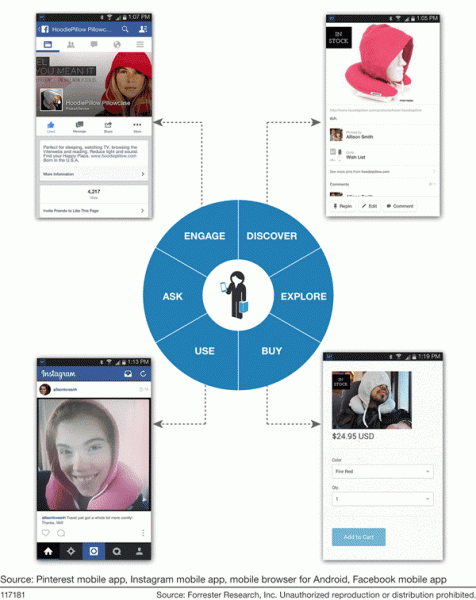Can Visual Analytics Stimulate Social Commerce In China?
with Allison Smith, Xiaofeng Wang and Vanessa Zeng
Chinese social platforms have started to engage in commerce via partnerships with eCommerce marketplaces, but online sales conversion rates from social traffic have been disappointing. For example, in May, 360buy (JD.com) — the second-largest B2C eCommerce marketplace — received a level-one access point on WeChat, the hottest social platform in China, but this didn’t deliver the large quantity of fulfilled mobile orders that the company expected. Haoyu Shen, CEO of JD.com, confirmed during the company’s Q3 financial earnings call that the majority of fulfilled mobile orders still originate from JD.com’s own mobile app. Forrester sees two major inhibitors of social commerce in China:
- People don’t expect to see commercial promotions of products they don’t want on social media. Consumers normally blacklist friends or public accounts that push these ads, making it difficult to implement traditional B2C or C2C eCommerce models on social platforms. However, if social marketplaces can provide people a tool in those moments in which they actually want to buy a certain product, it may enable social commerce.
- Customers have poor discovery and buying experiences on social commerce platforms. Social platforms in China that sell products and services online have limited search functionality, which does not make for a user-friendly customer discovery stage. Chinese consumers have gotten used to being able to compare many products and prices when making online purchases — but current social commerce platforms can’t support that.
As my colleague Allison Smith noted in her visual social analytics research, images are the hottest kind of content in social media. The prominence of images in social media may bring new opportunities for social commerce in China. When people are impressed by a product they’ve seen in an image on social media or a physical product that they’ve seen in someone else’s possession, they want to buy it. If social commerce vendors can provide customers a search and recommendation tool based on visual analytics, this could ease people’s ability to find and buy the product and thereby improve the customer experience throughout the customer life cycle (see the figure below).

Early adopters like JD.com include visual analytics tools to support purchase in their own mobile app through taking photos, but current usage experience is bad. I scan a beverage product purchased from JD.com, which I am sure they have the inventory, but can find the product through the visual analytics tool. Customer insights professionals at Chinese retailers or online marketplace providers who are looking for better visual analytics capabilities can try Western vendors like Ditto or superfish, which have solid image and entity recognition on social media. Local vendors like Baidu have tried to provide image mapping in their mobile apps but still lack analytics functions and are unconnected to social commerce.
Visual analytics provide a new way to execute eCommerce on social platforms. Do you agree? Please share your thoughts with us.